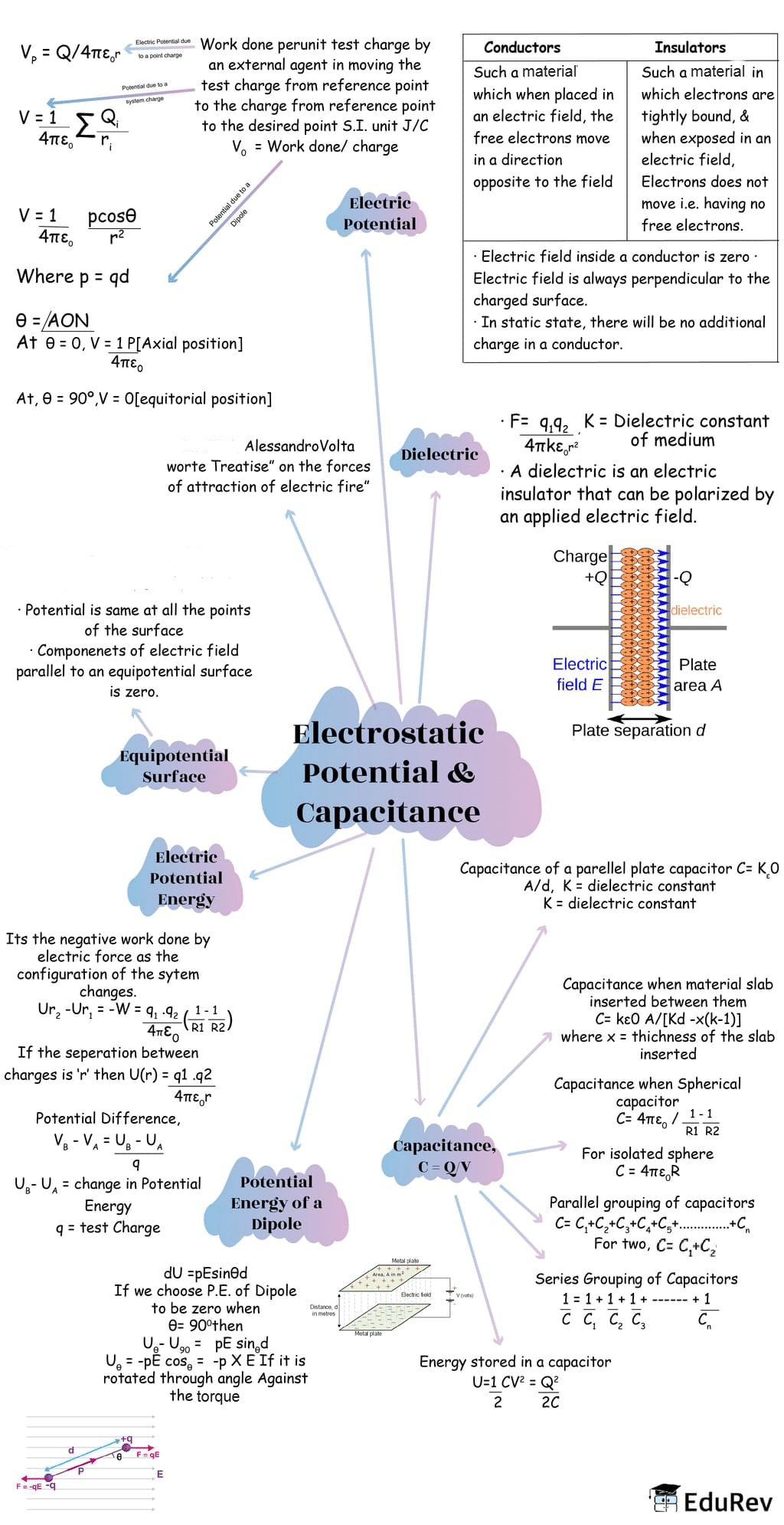NEET Exam > NEET Notes > Physics Class 12 > Mind Map: Electrostatic Potential and Capacitance
Mind Map: Electrostatic Potential and Capacitance | Physics Class 12 - NEET PDF Download

The document Mind Map: Electrostatic Potential and Capacitance | Physics Class 12 - NEET is a part of the NEET Course Physics Class 12.
All you need of NEET at this link: NEET
|
74 videos|314 docs|88 tests
|
FAQs on Mind Map: Electrostatic Potential and Capacitance - Physics Class 12 - NEET
| 1. What is electrostatic potential and how is it defined? |  |
Ans. Electrostatic potential at a point is defined as the amount of work done in bringing a unit positive charge from infinity to that point in an electric field without any acceleration. It is measured in volts (V), where 1 volt equals 1 joule per coulomb.
| 2. How is capacitance defined and what is its formula? |  |
Ans. Capacitance is defined as the ability of a system to store electric charge per unit voltage. It is given by the formula \( C = \frac{Q}{V} \), where \( C \) is the capacitance in farads (F), \( Q \) is the charge in coulombs (C), and \( V \) is the potential difference in volts (V).
| 3. What factors affect the capacitance of a capacitor? |  |
Ans. The capacitance of a capacitor depends on three main factors: the surface area of the conductive plates, the distance between the plates, and the dielectric material between the plates. Increasing the surface area or decreasing the distance increases capacitance, while using a dielectric material with a higher permittivity also increases capacitance.
| 4. What is the significance of the dielectric constant in capacitors? |  |
Ans. The dielectric constant (relative permittivity) is a measure of a material's ability to store electrical energy in an electric field. It affects the capacitance of capacitors; a higher dielectric constant results in greater capacitance for a given geometry. It also influences the behavior of the capacitor under different voltage conditions.
| 5. How can capacitance be calculated for capacitors in series and parallel? |  |
Ans. For capacitors in series, the total capacitance \( C_T \) is given by the formula \( \frac{1}{C_T} = \frac{1}{C_1} + \frac{1}{C_2} + ... + \frac{1}{C_n} \). For capacitors in parallel, the total capacitance \( C_T \) is calculated using \( C_T = C_1 + C_2 + ... + C_n \).
Related Searches






















